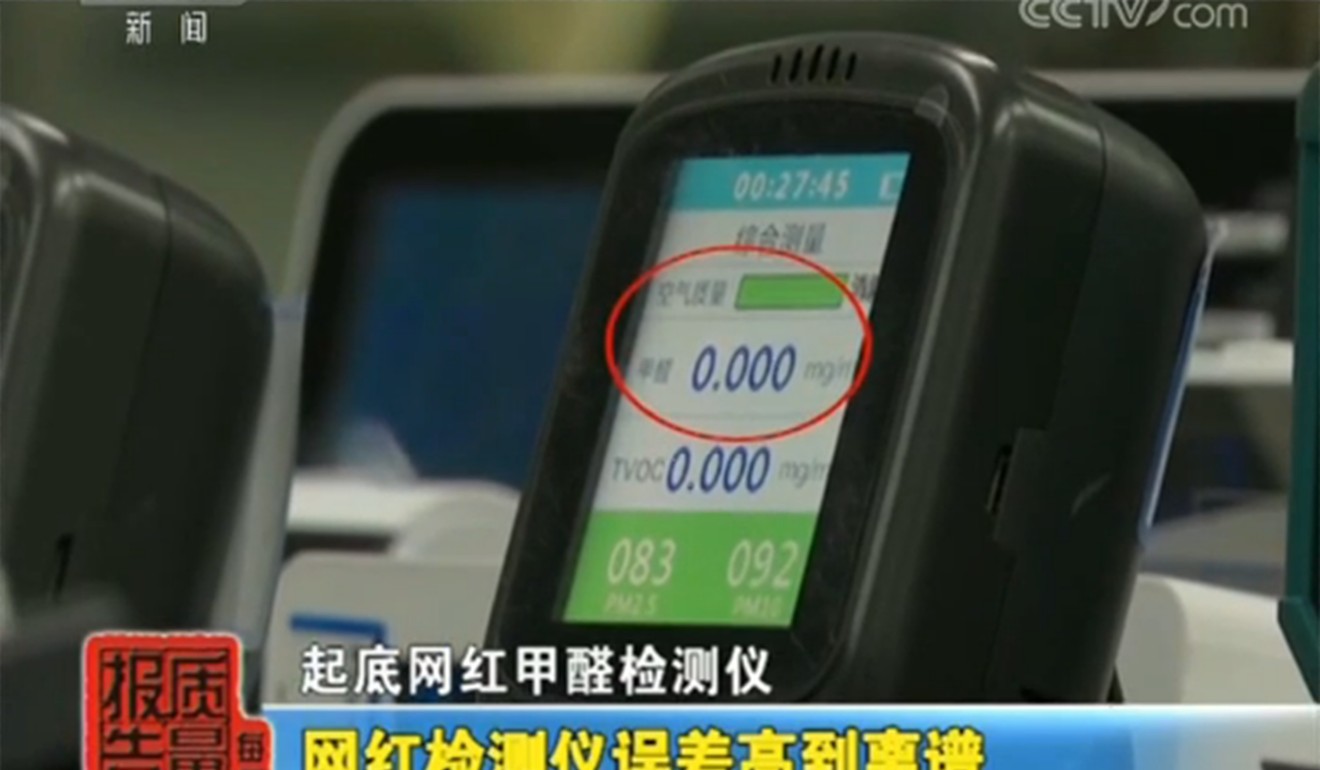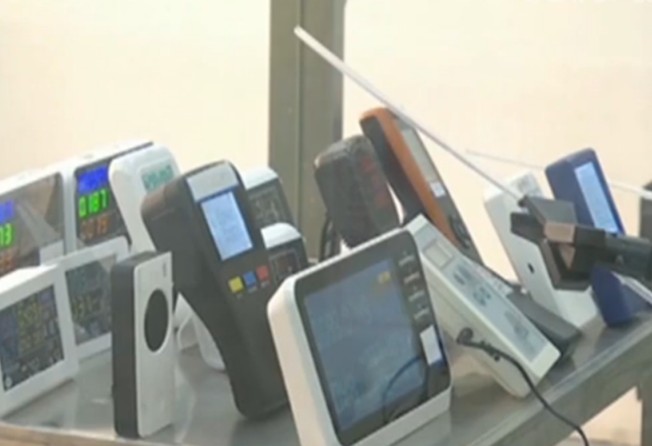
Popular Chinese handheld devices to measure formaldehyde fail tests
- None of the 41 meters checked by Shanghai authorities provided reliable readings on indoor pollution
- All of the products are sold online and their manufacturers are ‘suspected of exaggeration and false advertising’

Government checks in Shanghai have exposed many popular Chinese handheld devices used to measure indoor pollution as duds.
Authorities in the city assessed 41 formaldehyde meters sold on two big online shopping platforms and found none of them provided reliable readings, state broadcaster CCTV reported on Sunday.
Indoor formaldehyde pollution is typically associated with paint jobs and new furniture.
When tested in a laboratory, the devices – which claim to measure the density of organic pollutants in a room – provided highly erroneous readings, the Shanghai Institute of Measurement and Testing Technology found.
Products tested were from nearly 20 brands made by firms based in cities including Beijing, Shanghai, Shenzhen and Guangzhou, the report said. All of them are bestselling models priced below 1,000 yuan (US$150) on the JD and Tmall websites, the report said.
Formaldehyde meters are often the size of a smartphone and can be bought for as little as 50 yuan online. Some of them also claim to be able to read PM2.5 and total volatile organic compound (TVOC) levels, two major indicators of air quality.
Researchers from the institute put the meters in six different 30-square-metre environments – with varying temperatures, humidity and concentrations of formaldehyde – for 20 minutes. They then calculated the average of the readings given and found every single device tested had an error of more than 15 per cent, according to the report.
Some of the meters gave a zero reading in all six environments, while others showed a higher number in the less polluted rooms than for those where air quality was worse.

Wang Kang, deputy secretary general of the Association of Environmental Protection Industry of Shanghai, told the broadcaster that manufacturers of the products tested were “all suspected of exaggeration or false advertising”.
“From the results we can see that their functions fall far short of what they are advertised to be,” Wang said. “Some manufacturers don’t have a third-party test report, and some even make one up. We think this is really bad – this is deceiving consumers.”
He said growing public concern over indoor air quality had boosted the market for low-priced devices to measure pollution.
“Many consumers are worried about the concentration of formaldehyde and TVOC in their homes, so a lot of people want to test and treat the problem,” Wang said. “But because testing services are often very expensive, they try to do it themselves using these cheap handheld devices available online.”
Formaldehyde is a colourless, strong-smelling gas found in many products – from paint and chipboard to carpets, clothing, household items and even beer. It can cause irritation of the eyes, nose and throat, while exposure to high levels may lead to throat spasms, accumulation of fluid in the lungs and even death. The World Health Organisation estimates that 4.3 million people die every year from exposure to household air pollutants.